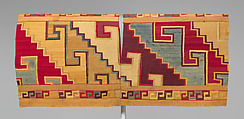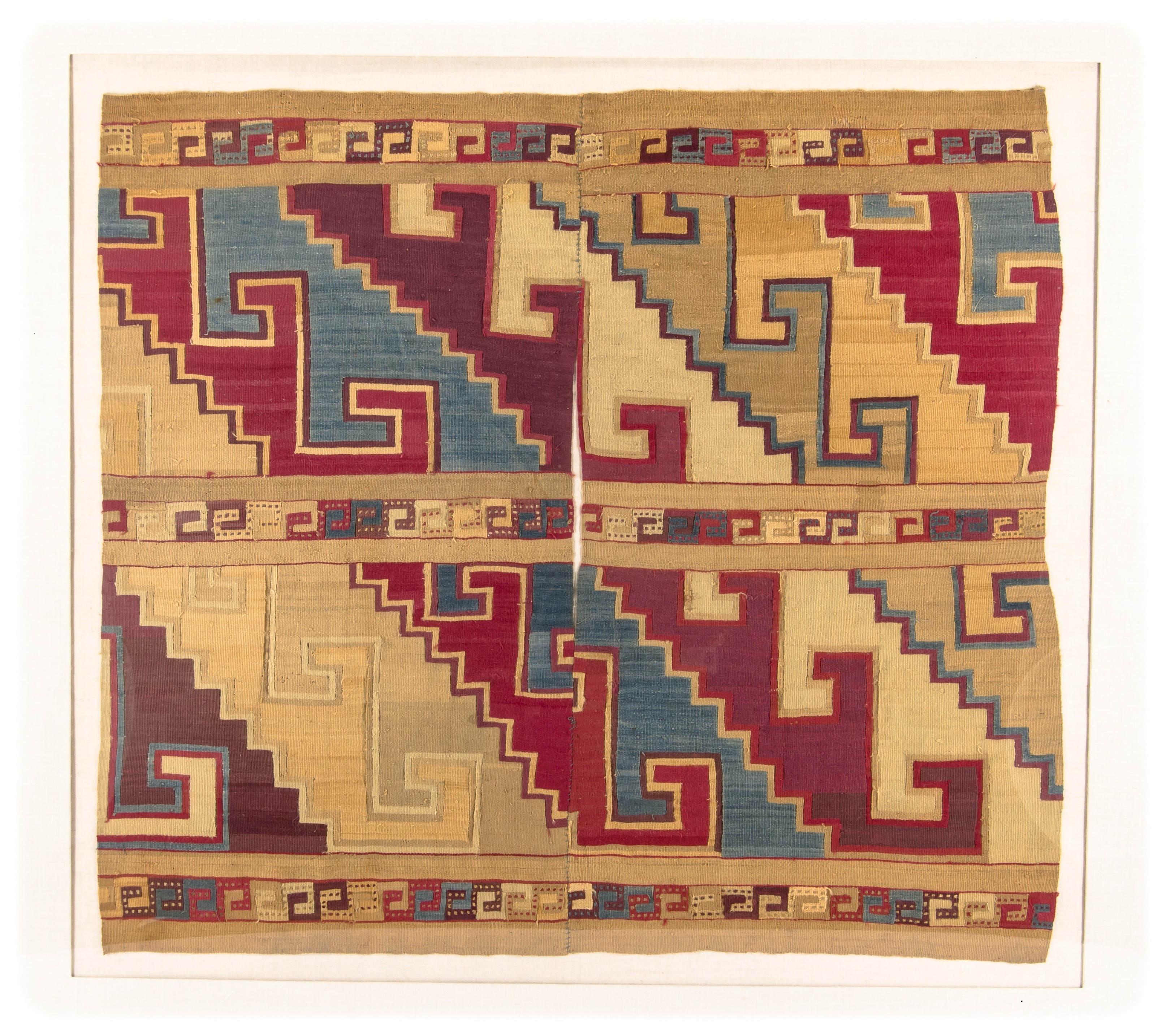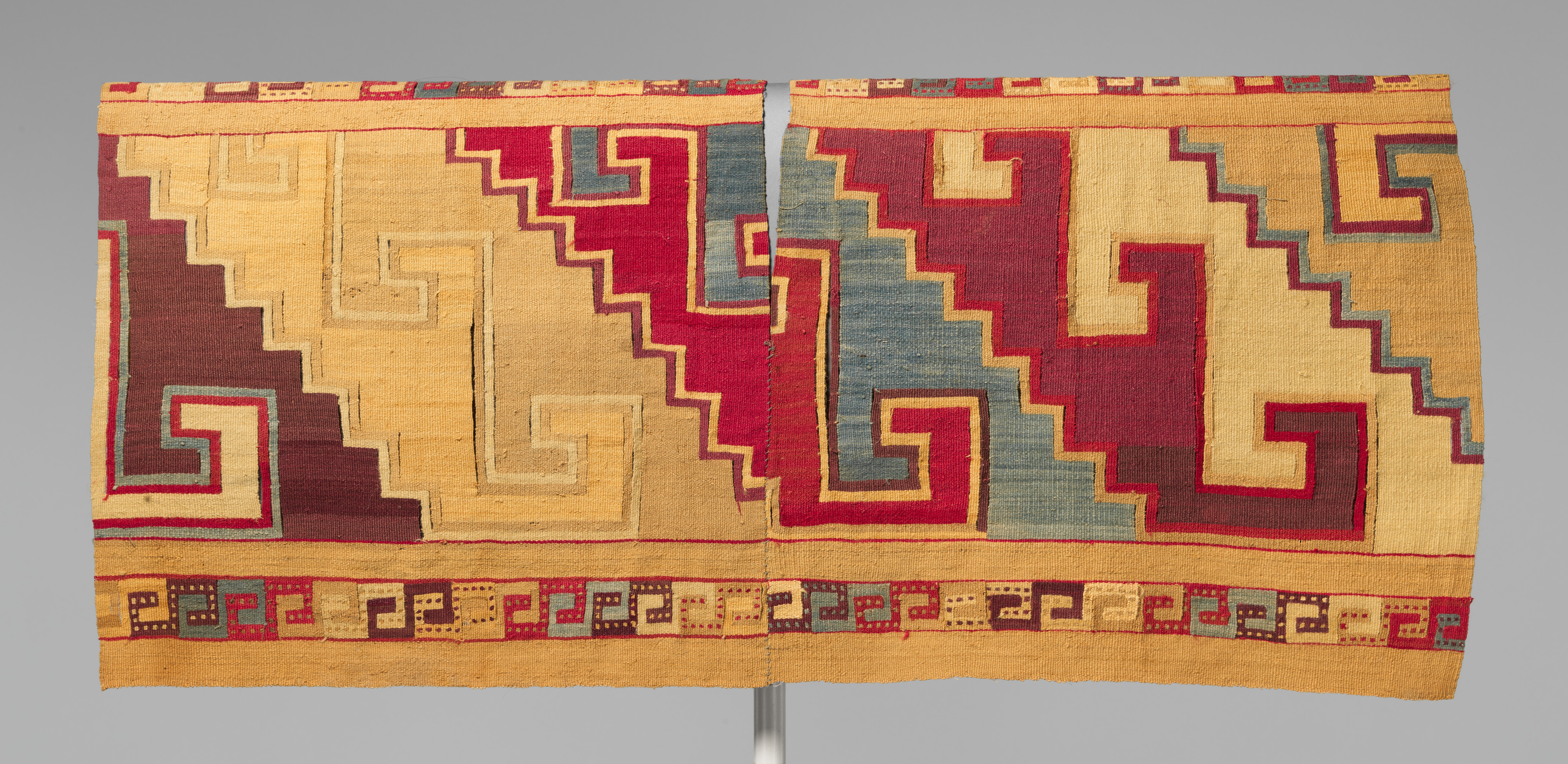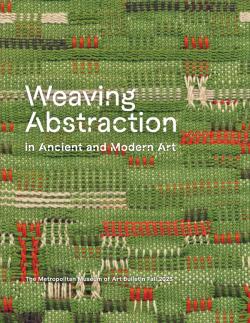Man's Tunic
This man’s tunic, from the Central Coast of Peru, is composed of two panels of slit-tapestry dyed camelid wool over cotton supports, joined at the middle, with an opening for the head. The tunic would have originally been sewn together at the sides, leaving openings for the arms. The principal step-fret design is repeated in contrasting colors of blue, red, purple, pale orange, and tan, contained within two borders of s-shaped scrolls, with an additional band of s-shaped scrolls across the middle (at the shoulder line), all in the same palette.
During the immediate pre-Inca and Inca periods, Central Coast textiles were exchanged widely, and related works are known from as far north as Pacatnamú on Peru’s North Coast and as far south as the site of La Centinela, about 200 kilometers south of Lima. The design of this tunic bears a resemblance to recently excavated murals at the site of Pachacamac, perhaps the pre-eminent oracle shrine of ancient Peru. The structure of the tunic, particularly the orientation of its designs, is closely associated with other tunics attributed to the Chancay culture, which flourished between about A.D. 1000 and 1500.
Due to rights restrictions, this image cannot be enlarged, viewed at full screen, or downloaded.
This artwork is meant to be viewed from right to left. Scroll left to view more.





